| Femmes Fatales | Sep 25 2023 |

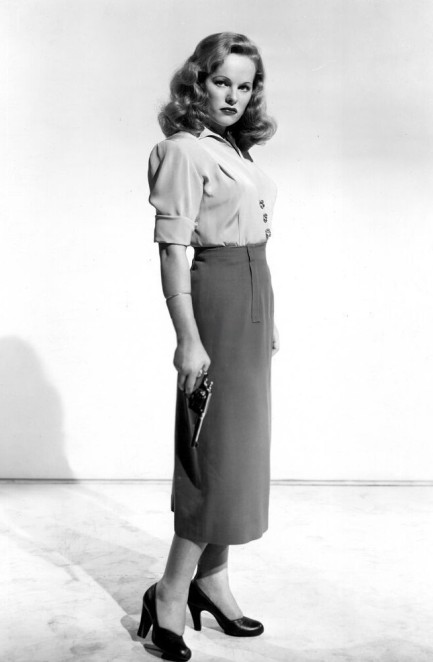
| Hollywoodland | Jan 3 2018 |

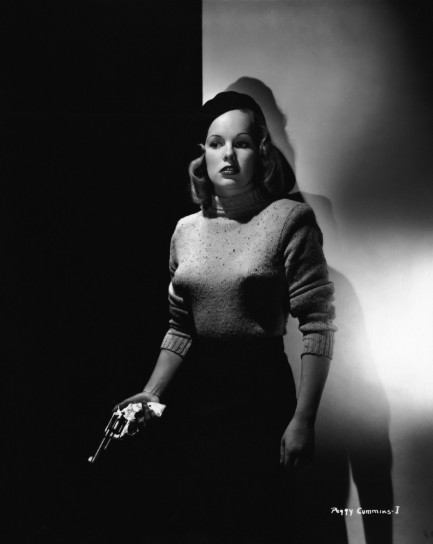
According to a story yesterday in The Hollywood Reporter, Wales born Irish actress Peggy Cummins died in a London hospital December 29 after suffering a stroke. She was ninety-two years old. Cummins, who was born Augusta Fuller, played the morality challenged Annie Laurie Starr in Gun Crazy, a low budget film noir that rose above its humble station over the decades to eventually be included in the U.S. Library of Congress’s National Film Registry. While the film is often characterized as a breakthrough fro Cummins, it was actually her eleventh screen role, and did not lead to a career of top notch offers. However, she ultimately appeared in more than twenty-five productions, with her last coming in 1965. The above photo was made a promo for Gun Crazy and dates from 1950.
| Mondo Bizarro | Jan 13 2012 |

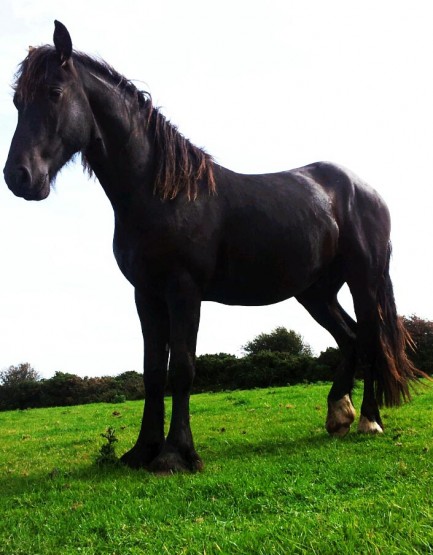
Twice within a week in Great Britain horses were mutilated in the dead of night in a manner that has been described by some authorities as ritualistic. The two horses—one in Carmarthenshire, Wales and the other in Stithians, Cornwall—were killed on nights bracketing a Satanic holiday known as St. Winebald’s Day, which falls on January 7. The Carmarthenshire horse, which was attacked January 5, had its eyes gouged out, an ear cut off, its stomach cut open, and its genitalia removed. The Stitihians horse, a large stallion named Erik (above), was killed on January 8 in similar fashion, but had only one eye removed, along with its teeth, while its ears were left intact. The Carmarthenshire crime is particularly intriguing, because when the owner of that horse was unable to remove the corpse immediately, the killer or killers returned that night—January 6—to further mutilate the animal. Because of the dates of the crimes and the fact that St. Winebald’s Day is considered by some Satanists to be an occasion for animal as well as human sacrifice, police have admitted that cult involvement is a strong possibility, though they are also considering more conventional motives. So far, searches of both crime scenes have turned up no clues.
| Femmes Fatales | Nov 20 2011 |

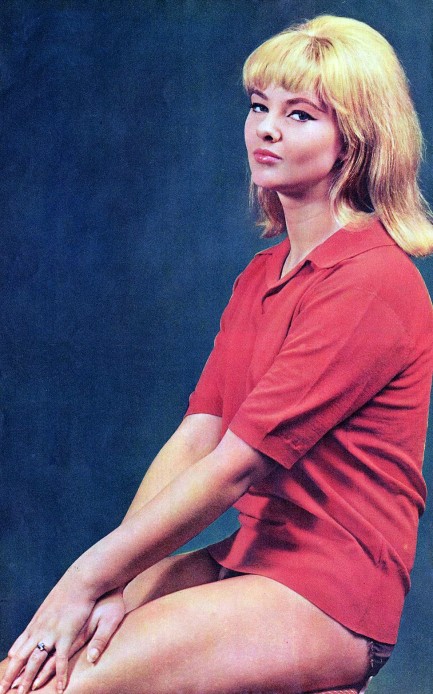
Q: What do you do when you find yourself in the middle of a national scandal? A: Parlay the recognition into money. The above photo of Welsh-born party girl Mandy Rice-Davies made us think yet again of that question and answer. The first time we remember considering them (because Rice-Davies was before our time), was during the Bill Clinton/Monica Lewinsky scandal. Lewinsky appeared on the cover of a national magazine and an acquaintance of ours commented that she must be mortified by the entire situation. But we noted, “Not so mortified that she didn’t manage to get into an expensive photography studio and get these shots made.” Not an affordable thing for a D.C. intern with legal fees looming, but no problem for a person who has signed a representation deal and is being backed by managers.
Likewise this photo of Mandy Rice-Davies tells the world she isn't the least interested in hiding, but rather in embracing her unexpected fame, derived from her role—along with friend Christine Keeler—in the Profumo Affair that rocked Britain’s conservative government in 1963 with tales of wild parties, paid sex, and nuclear secrets. Rice-Davies used the notoriety she gained to release pop singles, open nightclubs bearing her name, and write an autobiography and a novel. She and Keeler weren’t the first ordinary citizens to rise to fame on the back of a sexual scandal, nor the first to use that recognition for their benefit, but their case seems like a historical marker, telling us we were entering fully into an age in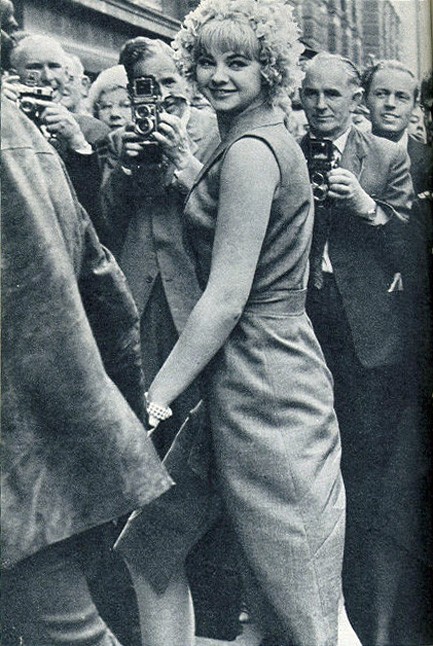 which infamy, pain and public spectacle would rank equally with creativity and intelligence as undifferentiated collateral to be traded for cash. A culture of Hiltons, Kardashians and Joe the Plumbers speaks to this truth. You can read more about Mandy Rice-Davies here.
which infamy, pain and public spectacle would rank equally with creativity and intelligence as undifferentiated collateral to be traded for cash. A culture of Hiltons, Kardashians and Joe the Plumbers speaks to this truth. You can read more about Mandy Rice-Davies here.
| The Naked City | Intl. Notebook | Oct 11 2011 |

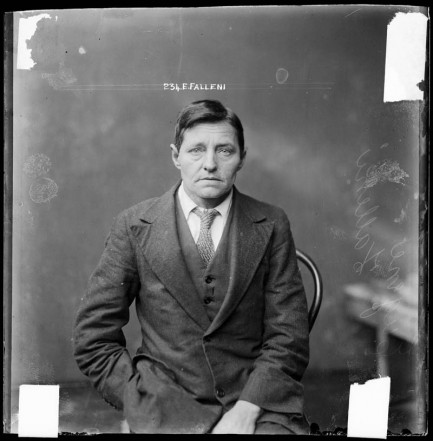
One of Pulp Intl.’s sharp-eyed readers sent us a link yesterday to a collection of early twentieth century mugshots compiled by Australia-based Historic Houses Trust. The photos are glass plate negatives from New South Wales police stations and were mostly taken between 1920 and 1930. Above you see a typical mugshot, this one of Eugenia Falleni, who was arrested in Sydney in 1920. Her crime is detailed as follows: When Harry Leon Crawford, hotel cleaner of Stanmore, was arrested and charged with wife murder he was revealed to be in fact Eugenia Falleni, a woman and mother, who had been passing as a man since 1899. In 1914, as Harry Crawford, Falleni had married the widow Annie Birkett. Three years later, shortly after she announced to a relative that she had found out “something amazing about Harry,” Birkett disappeared. Crawford told neighbors that she had run off with a plumber. In 1919 Birkett’s young son, who had remained in Crawford’s custody, told an aunt of attempts made on his life by his drunken stepfather. The aunt contacted police. A charred body which had been found in Lane Cove in 1917 was belatedly identified as Birkett’s. Crawford’s astonished second wife, when finally convinced of Falleni’s true gender remarked, “I always wondered why he was so painfully shy...”
More examples with descriptions of the perpetrators’ crimes appear below. You’ll notice the compositions are often quite nice. That’s partly because of the glass plate photography, but also because the subjects were allowed to compose themselves however they pleased. There's more at the Sydney Living Museums website. Because it isn’t very user-friendly, we’ve linked you past the home page and directly to the mugshot archive, but the rest of the site is worth visiting as well.
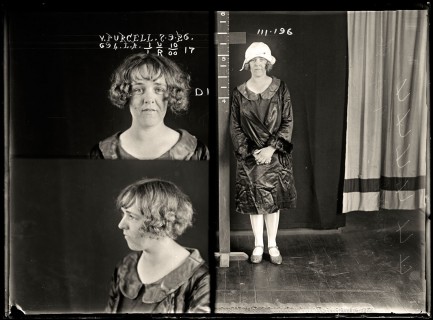 Vera Purcell, 7 September 1926, aged 25, stole a large quantity of clothing from a house in Darlinghurst and was sentenced to six months hard labor at the State Reformatory for Women at Long Bay.
Vera Purcell, 7 September 1926, aged 25, stole a large quantity of clothing from a house in Darlinghurst and was sentenced to six months hard labor at the State Reformatory for Women at Long Bay.
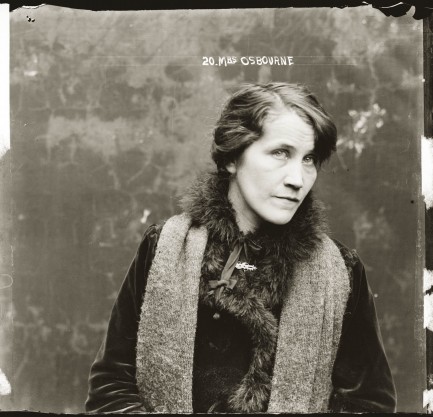 Mrs. Osborne, circa 1919, details unknown.
Mrs. Osborne, circa 1919, details unknown.
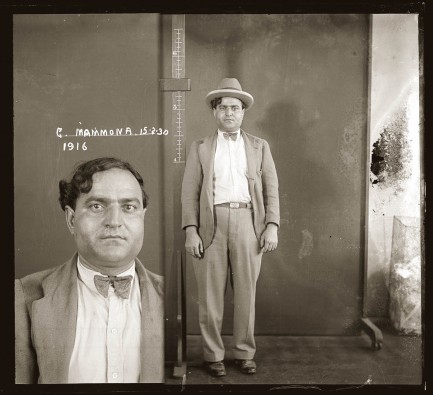 Giuseppe Mammone, aka G. Mammona, 15 February 1930, arrested for suspicion of the murder of Domenico Belle. Mammone ran a barbershop in Leichhardt and owed Belle money. Despite police suspicions, Mammone was never charged with the crime.
Giuseppe Mammone, aka G. Mammona, 15 February 1930, arrested for suspicion of the murder of Domenico Belle. Mammone ran a barbershop in Leichhardt and owed Belle money. Despite police suspicions, Mammone was never charged with the crime.
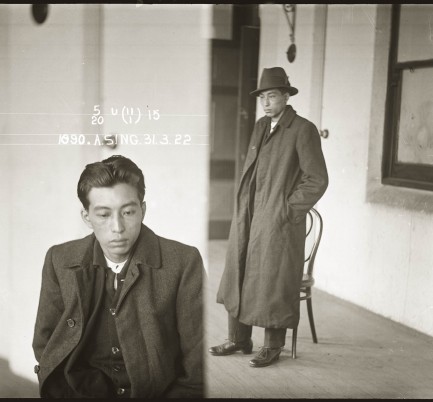 Albert Sing, 31 March 1922, received stolen goods, including fountain pens, cutlery and clothing, and was sentenced to eighteen months hard labor.
Albert Sing, 31 March 1922, received stolen goods, including fountain pens, cutlery and clothing, and was sentenced to eighteen months hard labor.
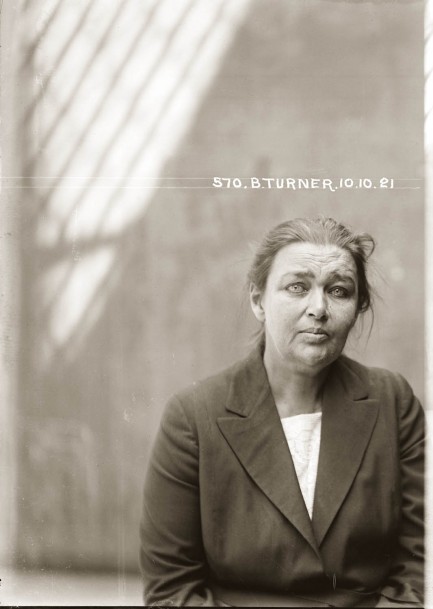 Barbara Turner, aka Tierney, Tiernan, Taylor, Florence Gillespie, Jessi Turner, et. al., 10 October 1921, Central Police Station, Sydney, was a confidence woman who operated widely across Australia and was arrested for defrauding a man named Henry Placings of 106 pounds by borrowing against a forged check. She served a year in prison.
Barbara Turner, aka Tierney, Tiernan, Taylor, Florence Gillespie, Jessi Turner, et. al., 10 October 1921, Central Police Station, Sydney, was a confidence woman who operated widely across Australia and was arrested for defrauding a man named Henry Placings of 106 pounds by borrowing against a forged check. She served a year in prison.
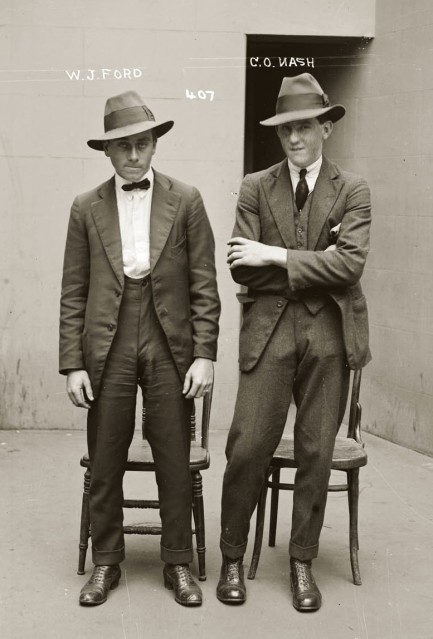 John Walter Ford and Oswald Clive Nash, June 1921, both aged sixteen, were arrested for breaking and entering.
John Walter Ford and Oswald Clive Nash, June 1921, both aged sixteen, were arrested for breaking and entering.
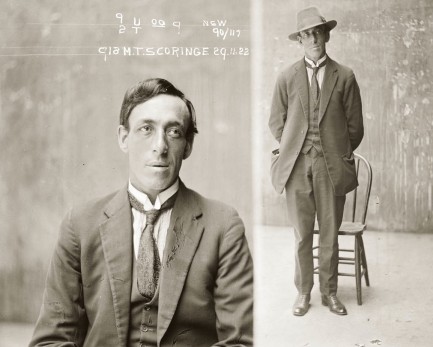 Masterman Thomas Scoringe, 29 November 1922, Central Police Station, Sydney, was a house thief who specialized in robbing the residences of Chinese people.
Masterman Thomas Scoringe, 29 November 1922, Central Police Station, Sydney, was a house thief who specialized in robbing the residences of Chinese people.
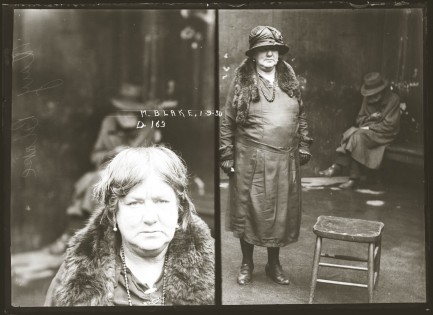 May Blake, 1 September 1930, Central Police Station, Sydney, charged with cocaine possession and sentenced to one year in jail.
May Blake, 1 September 1930, Central Police Station, Sydney, charged with cocaine possession and sentenced to one year in jail.
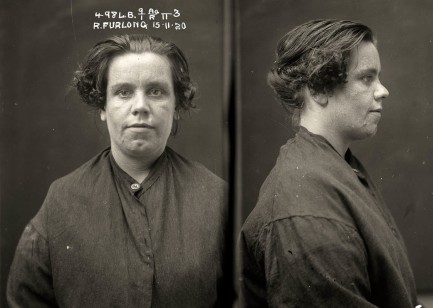 Ruby Furlong, 15 November 1920, State Reformatory for Women, Long Bay, arrested for malicious wounding. Furlong was a feared criminal, and during an argument with a Newtown man she pulled a razor and cut his face open.
Ruby Furlong, 15 November 1920, State Reformatory for Women, Long Bay, arrested for malicious wounding. Furlong was a feared criminal, and during an argument with a Newtown man she pulled a razor and cut his face open.
| Vintage Pulp | Sep 22 2009 |

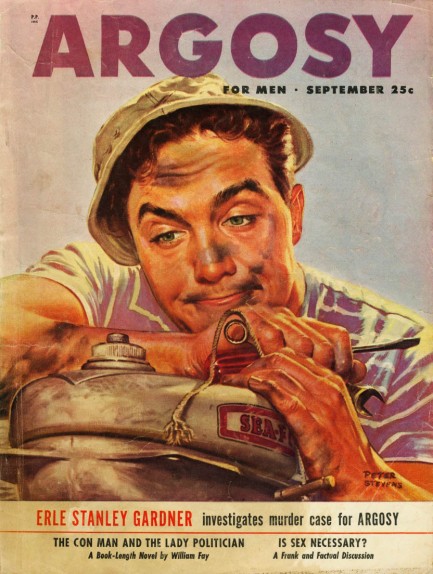
We decided to revisit Argosy magazine today, with a cover from September 1948. The idyllic image of a man who’s positively blissful over his boat motor was painted by Peter Stevens, a Welsh artist who settled in the U.S. during WWII, and after a career in the pulps, went on to become a well-regarded portraitist. You can see more pieces and read a bio here. Meanwhile we’ll be doing to some research on boating to try and find out what kind of happy vapors this guy is inhaling.




































































